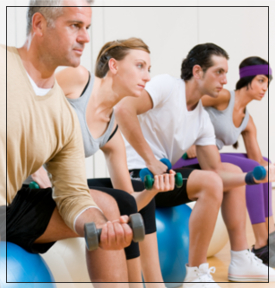
As a training routine, weightlifting offers several benefits, including fat loss, increased bone density and strength. However, most people who lift weights do not start with a class or one-on-one instruction. You may watch others use equipment at the gym or simply go for it with a pair of dumbbells but unfortunately, casual weightlifting often leads to poor positioning. As a result, you don’t receive the full range of benefits and could end up injured.
According to research, even professional weightlifters have a higher likelihood of spine, shoulder and knee injuries. Several factors influence the likelihood of injury from lifting weights.
Old, Damaged Equipment
Ankle injuries are one of the more likely to be caused by a lack of quality equipment. At the gym, this could be a badly worn platform or uneven surface that places irregular stress on your joints. Footwear can also play a role, especially if the heel is higher or the soles don’t have enough tread. Ideally, the wearer can get a good grip without having to worry about trip hazards on the platform.
Aside from where you stand, how you hold the bar could also place strain on the wrist joints. Through no fault of your own, the bar might not be oiled or rotated correctly or could be bent, which affects how you lift and where the bar’s force is placed.
Lower Back Pain and Poor Form
If you experience lower back pain after lifting, it’s often a byproduct of poor form. By default, lifting a heavy load squeezes the intervertebral discs, which places strain on the vertebrae and ligaments. Too many repetitions with poor form may result in a herniated disc, which starts with pain or tingling in the lower back that may also travel down the legs. Watch your position as you lift and limit the number of reps – particularly if squats are involved – to protect your spine.
Repetitive Motion Injuries
Weightlifting is a fairly repetitive activity. Over time, these rhythmic behaviors put strain on the shoulders and could result in rotator cuff injury or a SLAP (superior labrum anterior and posterior) tear. If your shoulders feel weak, you hear joints popping or you can’t raise your arms up without pain, reduce the number of reps involving overhead positioning.
Patellar Tendonitis
Weightlifters experience this specific type of tendonitis below the kneecap after placing too much stress on the ligament. Inflammation generally stems from a lack of proper alignment during squats, lunges and any moves that place lateral stress on the knee.
Once you feel irritation or strain in this area, it’s recommended you:
- Stay off your knee until the inflammation calms down.
- Ease your way back into routine once your knee feels better.
- Shift the focus to your glutes by using your hip muscles to improve alignment.
General Tips to Reduce Injuries
- As you lift, go through the full range of motion.
- Reduce the amount of reps or use lighter weights.
- Pay attention to muscle fatigue to make sure you’re lifting an appropriate weight.
- Keep your core tight to protect your spine. If you stand with your back straight against a wall, you should notice a slight curve at your lower back. Keep this position during all exercises.
- Limit the number of “twisting” reps you do, as these place more weight and stress on your discs.
- Always warm up your upper back before starting a strength training session.
- Keep your shoulders down and away from your ears as you work your upper body.
- Limit strengthening exercises where your arms are behind your back or above your head.
- Never exercise the same muscle groups two days in a row. Aim to cover all muscle groups over the course of the week.
- Take your reps slow and isolate each muscle group. Be sure to rest for one minute between each set.
- Never work through the pain. If you’re hurting after a particular exercise, stop for the day and try another time with lighter weights.
To learn proper form and reduce weightlifting injuries, work with one of our certified athletic trainers.

